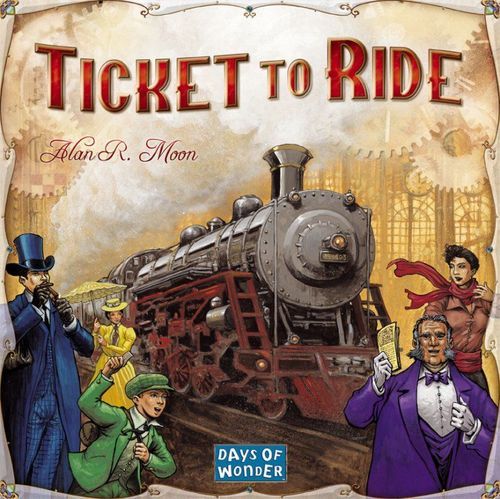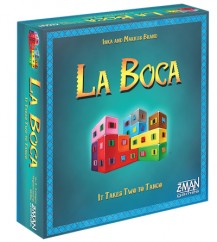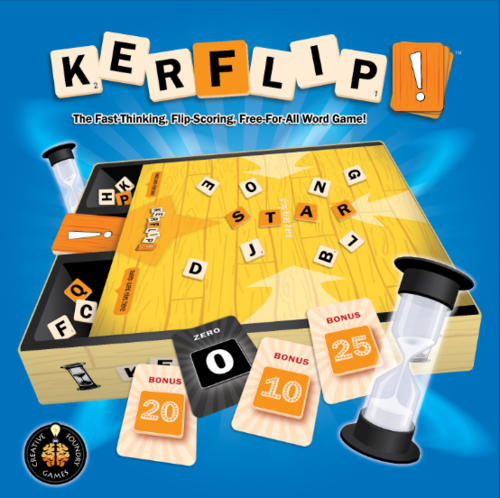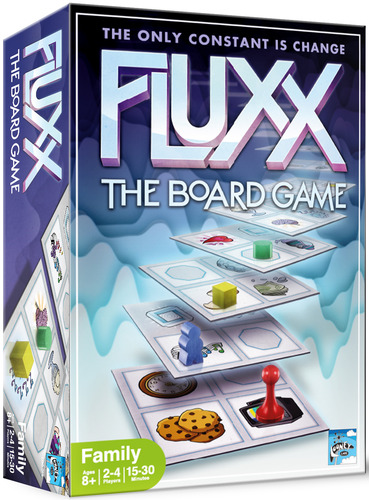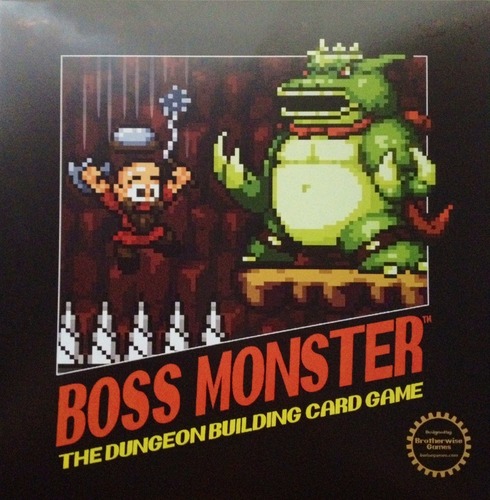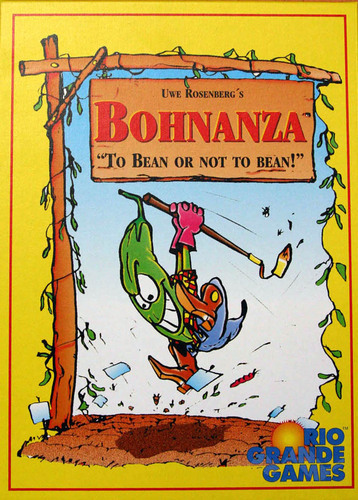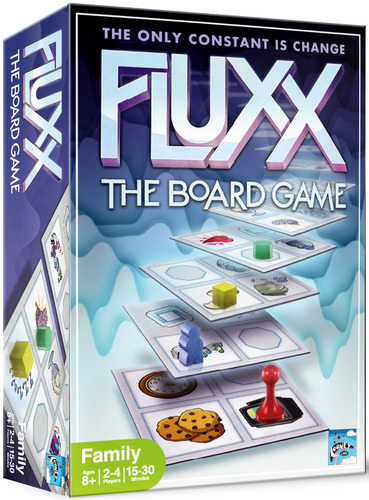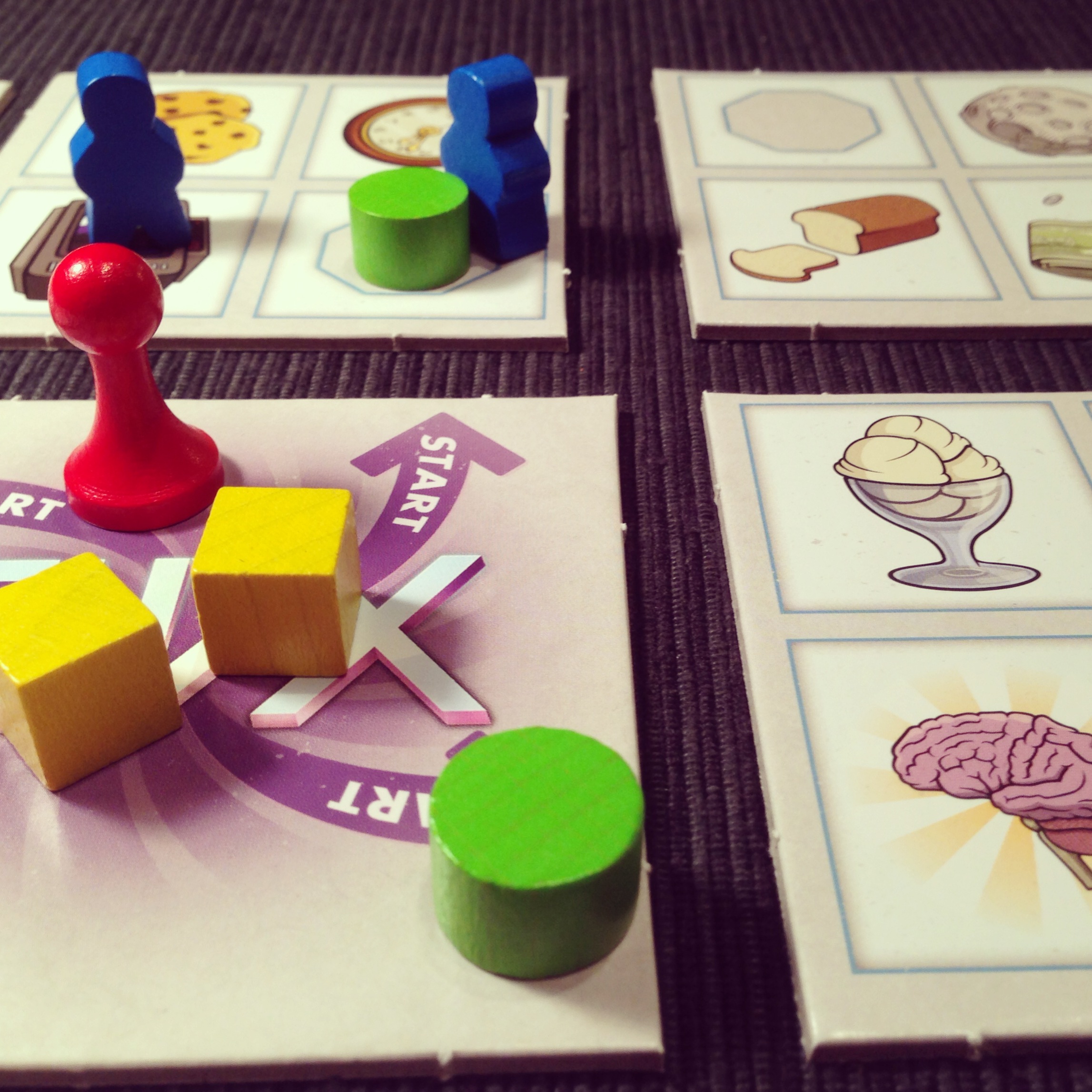There are blue Action cards that make something happen. They might let you trade hands with another player, or force everyone to trade colors. There are yellow New Rule cards, that change the rules somehow. They might tell you exactly how to change a peg, or give you options on what to move. Green Leaper cards have one of the pictures from the tiles on them, and you just jump a piece to that space. Purple Goal cards are played onto the top of the Goal pile, so that becomes the current Goal.
The Start tile has four arrows leading out of it, and you can only leave using one of those arrows. You'll be moving and playing cards and trying to match the Goal card currently on the top of the Win board.
Most spaces have a picture of one thing on them: chocolate, sun, music, brain. Each space can only hold one piece. If you move onto a space with another piece, you bump it to an adjacent unoccupied space (other than the one you just came from).
Each tile has one octagon space, which can hold any number of players. There are also two Portal spaces. As soon as someone moves onto one of the Portals, that person is immediately transported to the other Portal space.
There are also Special Move rules. One allows you to rotate a tile as one of your moves. One lets you pick up a tile and move it to another space—as long as you keep the orientation the same and as long as it's still connected to the rest of the tiles. And finally, the Wraparound rule lets you move off of one edge of the board and wraparound to the other. You can even cross gaps left over from uprooting a tile this way.
Any time (even on another player's turn) that you have pieces on spaces that match the current goal, you take that card. And as soon as someone has a number of Goal cards matching the current win level on the Win board, that person...wins!
The Verdict and Recommendations
Firestone—It's no secret that I don't really like Fluxx. It's way WAY too chaotic for me. I'll play with my family, but I wouldn't call it my favorite family game by a long shot. But Looney Labs wanted me to play this anyway, because it was more strategic, they said. I was skeptical but open-minded. Well they were absolutely right.
Rather than being based completely on the luck of the draw, Fluxx: The Board Game feels more like a puzzle: Each turn is a little puzzle to solve. Sure, there are still cards to draw and luck there, but there's also more stuff you can do to affect your position. How can I get myself onto those two spaces using the rules, cards, and movement available to me? While there's still some chaos and luck, I felt as though I had more control than I EVER had in the card game.
Jeremiah—I, on the other hand, am a huge fan of Fluxx! Fluxx, if nothing else, is unique compared to anything else you will play—I love the way the game wreaks havoc with the players, causing them to readjust constantly. No, it's not very strategic—at times—but there's something about seeing the agony on your friend's face when they realize they HAVE to play a card that causes you to win!
Fluxx the board game captures a lot of the original feel of the card game but does a great job of creating a new experience for fans of the game and newcomers!
Firestone—The pieces are a mix of good and bad. The pegboards and tiles are all nice and thick, but the pegs are too long. So when the pegs are in, the boards won't sit flat on the table, and if you push the board down flat onto the table, some of the pegs pop out. The wooden pieces are nice and chunky, and the cards are all adequate—though very, very thin.


